In the golden age of 3D platforming, no other titles captured the imaginations of players quite like Rare’s Banjo-Kazooie and its sequel Banjo–Tooie, both for Nintendo 64. With colorful characters, impeccable sound design, and creative world-building, the two games together are an endlessly re-playable double whammy collect-a-thon. As they make their grand return to Nintendo on the Switch Online service, let’s revisit the best worlds between both games.
7. Click Clock Wood
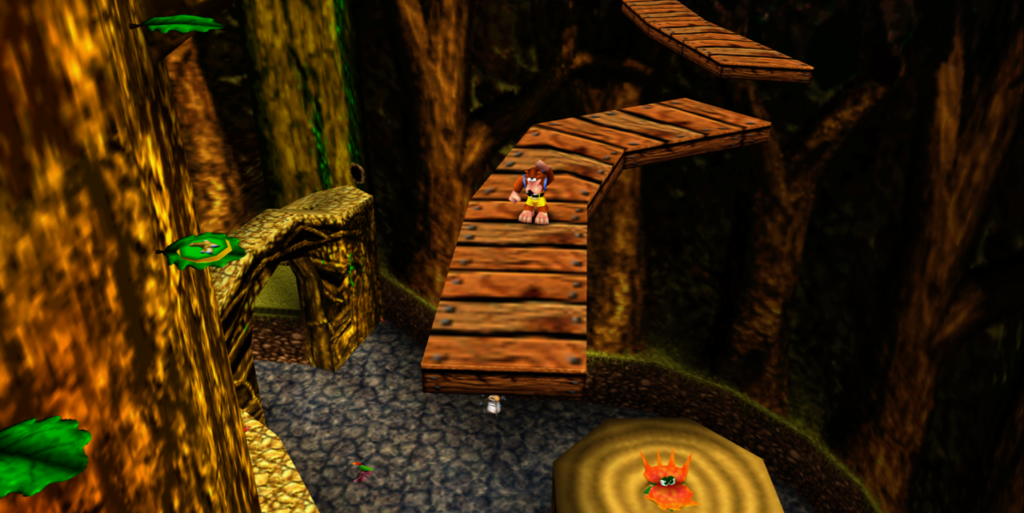
Click Clock Wood is the perfect final world for the first Banjo-Kazooie. It features a unique mechanic that offers four different versions of the level: spring, summer, fall, and winter. The player’s actions in an earlier season will advance their goals in a later season. For instance, in spring, Gnawty the Beaver’s home is blocked off by an underwater boulder, and Banjo has no way of removing it. In summer, Banjo can break the boulder, but the entrance is too steep to climb, and the player must wait until fall when the lake is full. It is the only world in the game where the objectives are contingent on the passage of time and require advance planning by the player.
Switching between the four seasons impacts how the player moves through the world. Leaves may or may not be in bloom to use as platforms; entrances to sub-areas may or may not be accessible; different types of enemies will threaten progress. Because the player’s path spirals up a massive tree, one wrong move can result in a potentially game-ending plummet, making Click Clock Wood the game’s most challenging offering. It can also be a frustrating gauntlet for completionists — a few missing musical notes means backtracking through all four seasons. Mumbo’s transformation for Click Clock Wood is a bee, which grants the player unlimited mobility for aerial exploration. It can be a slog for first-timers, but its signature seasonal switching earns its place on this list.
6. Jolly Roger’s Lagoon
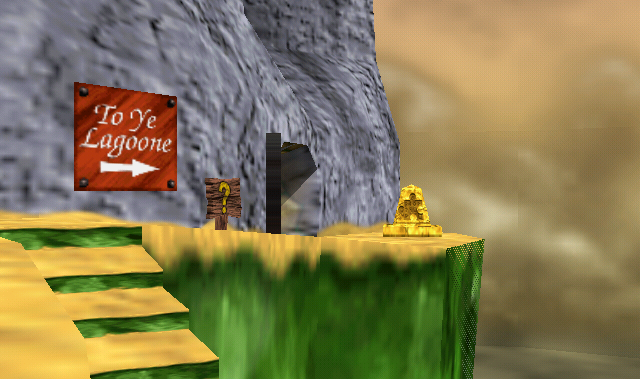
Most underwater levels are largely reviled by 3D platforming fans, but Jolly Roger’s Lagoon in Banjo-Tooie should be regarded as a rare exception. The world seems very small with little to offer at first glance, however the pastoral town has a certain charm. It’s filled with charming characters new and old, and each has a specific task for Banjo that will earn him a Jiggy. The Lagoon is also the only world with its own currency, and doubloons can be collected and exchanged at Pawno’s shop for a Jiggy, a Cheato page, and a set of Turbo Trainers.
The player can easily spend a good thirty minutes on dry land before deciding to delve into the lagoon itself. Once underwater, the true breadth of Jolly Roger’s Lagoon unfurls as Banjo and Kazooie test their new water abilities in the ruins of Atlantis. The Ancient Greek architecture contains such dangers as an electric eel lair, a swimming bath crawling with Keelhauls, a temple with the deep-diving pig Chris P. Bacon, the interior belly of a giant fish, and a mysterious UFO. Just when it seems like the Lagoon’s offerings have been exhausted, Wumba transforms Banjo into a submarine, granting the player access to deeper waters. A torpedo shooting minigame and a challenging battle with Lord Woo Fak Fak await in the lagoon’s sea bottom, making Jolly Roger’s Lagoon the world that keeps on giving.
5. Treasure Trove Cove
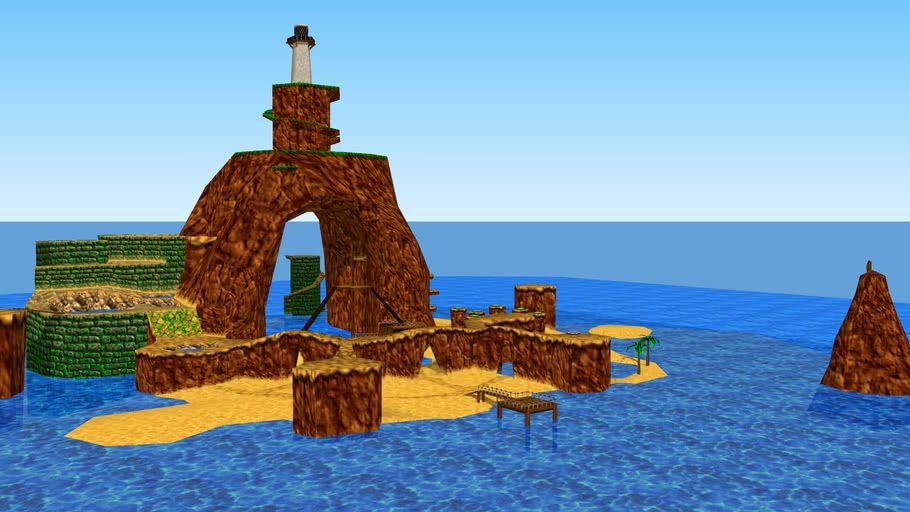
No world in either game masters its vibe as well as Treasure Trove Cove. From the moment the player enters and composer Grant Kirkhope’s infectious steel drums start bouncing, Banjo is taken on a whirlwind traipse through the sand. It is arguably the most iconic level in Banjo-Kazooie, and is likely to be the first world that comes to mind when the series is mentioned. A lot of strong visual and audio design choices help the world stick out in memory: the distinctive creaks of the toothy treasure chests opening and closing; the orchestra from Jaws announcing the approach of Snacker the Shark 0.02 seconds after Banjo hits the water; the eerie, crepuscular interior of Nipper’s shell echoing with Kirkhope’s slow-mode xylophone; the sudden absence of any noise at all at the lighthouse up-high, save for the quiet beach breeze.
This world also introduces one of Bottles’ most exciting skills for Kazooie: flying with red feathers. Any playthrough of the game will include a certain thrill at the prospect of recapturing the magic of launching from the ground for the first time. The cove also features the in-game cheat code system: the sandcastle. Part of the reason why this level is so memorable may be a result of repeat visits spent ground-pounding the sandcastle floor with every new Cheato spell. From the sunken depths of the centerpiece pirate ship to the mysterious allure of the unreachable Sharkbait Island, Treasure Trove Cove is overall much larger and bursting with life than its preceding world.
4. Hailfire Peaks
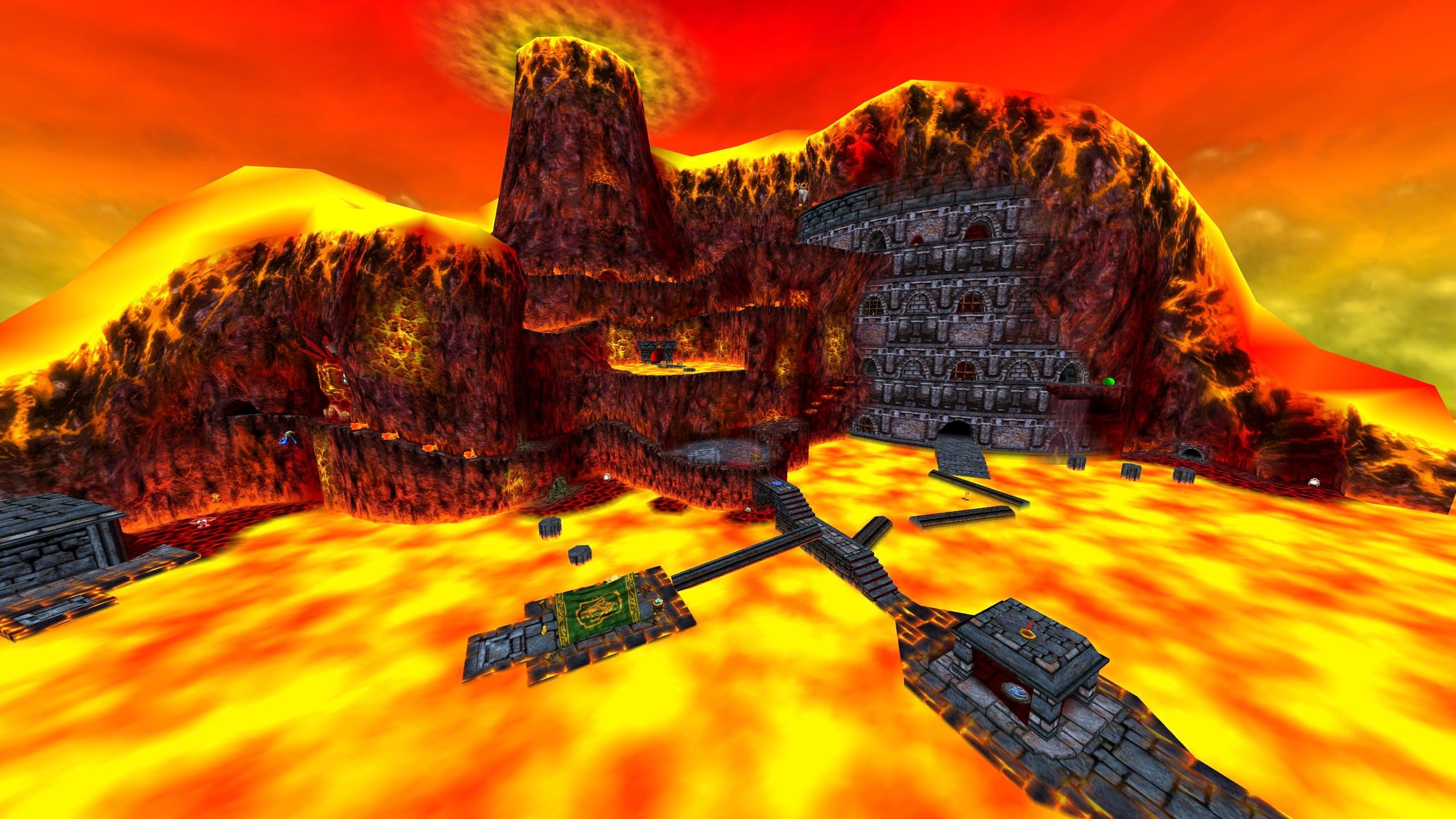
Banjo-Tooie features a dual world with two different themes: fire and ice. Unlike Click Clock Wood, these two themes are not simple re-skins of one layout — they are entirely distinct from one another, with different challenges and enemies. The fire side of Hailfire Peaks oozes danger, with fiery Hothands grabbing at Banjo on narrow pathways, dive-bombing Hotheads on flying carpets, and burning lava that takes up most of the scenery. There’s an addictive kickball minigame in the coliseum, but that requires some tedious backtracking for a previous world’s transformation. At the top of the volcano awaits Chilli Billi, a lava dragon that can be defeated by shooting ice eggs into canons.
On the other side of Hailfire Peaks, an ice dragon named Chilly Willy can likewise be defeated by fire egg canons. It’s nothing crazy, but it’s a fun idea to match the two different faces of the world with two different bosses. The UFO from Jolly Roger’s Lagoon returns, showcasing Banjo–Tooie’s tendency to capitalize on crossover elements between worlds. Never mind that the alien in the UFO falls out of his ship and… dies. A Mumbo spell brings him back to life, but that experience is strangely harrowing. The icy side features one of the game’s unique transformations: a big, rolling snowball that the player will use to navigate a treacherous path to restart an oil drill. In a stunning upgrade, Kazooie is granted the ability to fly on her own while separated from Banjo, without the need for feathers or fly pads.
3. Mad Monster Mansion
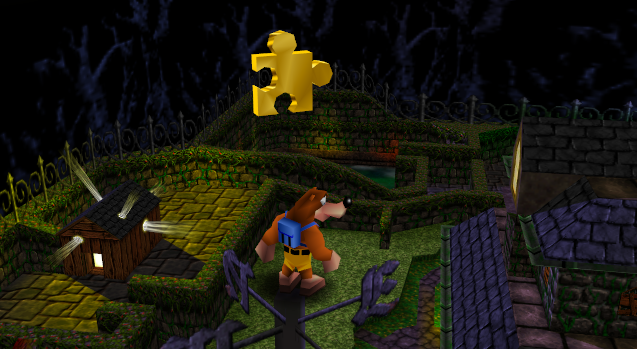
The best worlds in Rare games are the ones that contain hidden multitudes. Mad Monster Mansion is the seventh world in the original Banjo-Kazooie, and it appropriately ratchets up the challenges along with a spooky, gloomy tone shift. It hosts many puzzles without immediate solutions, and it houses the most Mumbo tokens of any world in the game. Banjo romps around the titular mansion as well as the surrounding buildings, battling skeletons, specters, and wildly thrashing plants. The world is filled with memorable haunts such as a ghost-infested hedge maze, a church containing an organ-playing spirit hand, and a water well that requires Mumbo’s pumpkin transformation for entry. Despite these rich offerings, the real thrill begins when the player realizes the mansion can be scaled and entered at various points.
For first-time players, the climbable water spout at one of the corners of the mansion might blend into the background. Given the limitations of the game’s camera controls, it may not be until Banjo transforms into a pumpkin and traverses the top of the hedge maze that the upper level of the mansion is revealed — there is a connecting bridge from the maze to the roof. Once there, the house’s many breakable windows may only first be discovered by chance, as there are no obvious visual indicators. This leads to a real feeling of discovery for the player as they eagerly send Banjo hurtling through every window in sight to see what waits within. By using rich and distinct interior sub-areas folded into the same exterior conceit, Mad Monster Mansion provides a masterclass in making a game world feel larger than it really is.
2. Freezeezy Peak
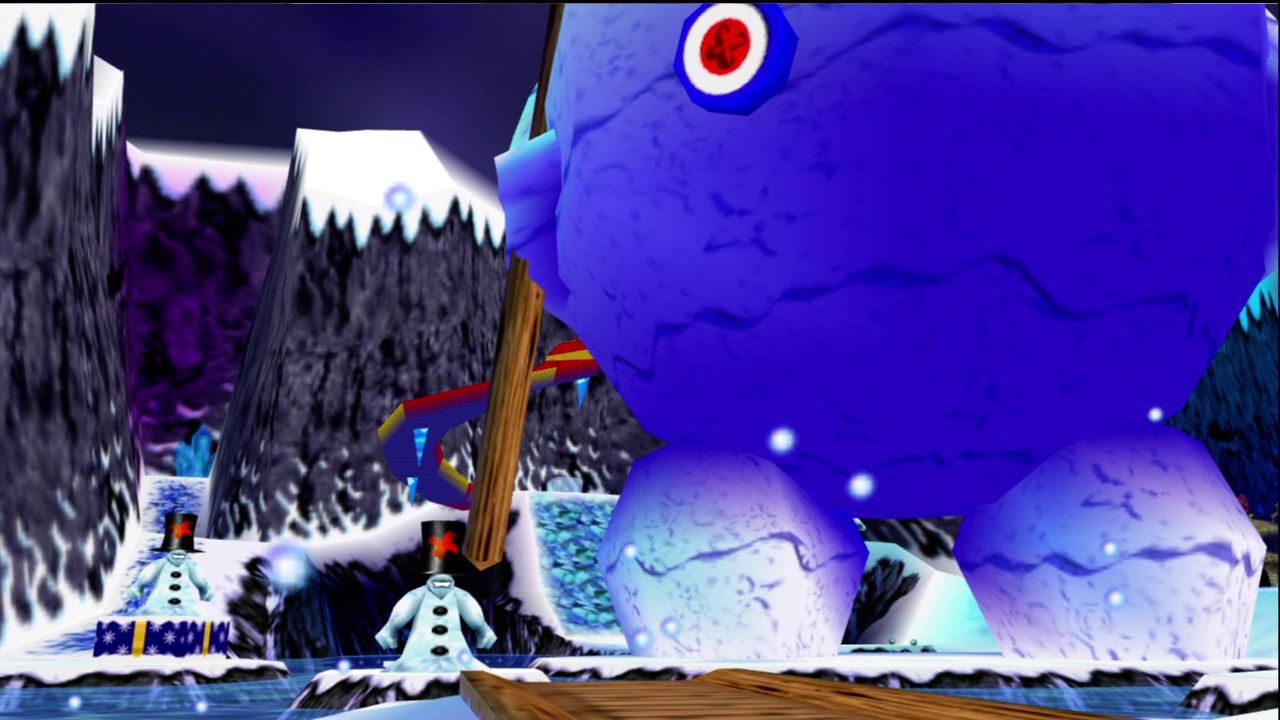
Easily the best world in Banjo-Kazooie, Freezeezy Peak is an unparalleled joy to play through. Serving as the mid-point of Banjo’s journey, its seasonal festivity swirls in a winter wonderland that manages not to feel like just an empty snowfield. The key element tying the world design together is the massive, scalable snowman in the center. There’s something monumentally exciting about traveling up the snowman’s flowing scarf, collecting notes and feathers on the way. At the top is a somewhat perilous platforming sequence involving the snowman’s wooden peg mouth, corn cob pipe, and carrot nose to get to the top hat. A toboggan provides a quick trip back down and hilariously lands on Boggy the polar bear’s stomach, prompting him to spit out a Jiggy.
Freezeezy Peak brings back the flight pads from Treasure Trove Cove and provides additional training on their usage. Kazooie learns the beak bomb, which sends her speeding like a missile through the air. The player must use it to ram the snowman’s chest buttons, but also to dispatch what are possibly the most annoying enemies in the game, the Sir Slushies. Their evil laughs and impossibly accurate snowballs make flying more of a hardship than ever before; but once the beak bomb is learned, dive-bombing the red ‘X’ marks on their big, dumb hats to make them explode is immensely satisfying. Freezeezy Peak also features Kirkhope’s crowning achievement with the best soundtrack of his career.
1. Witchyworld
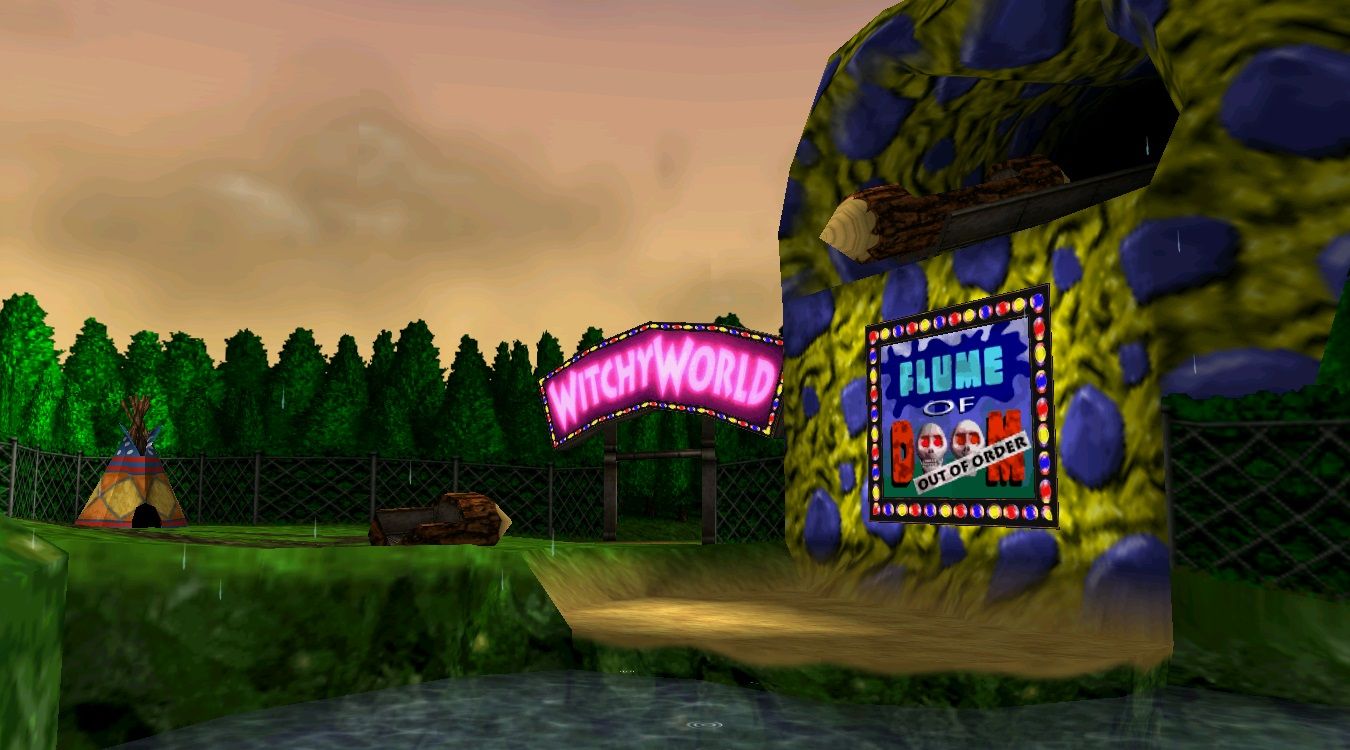
Originally planned for Banjo–Kazooie but saved for Banjo-Tooie, Witchyworld is a defunct and hazardous amusement park that sports disgusting food stands and unattractive attractions. It’s a very funny conceit for a level, and the designers stuff it chock-full of things to do. The amusement park features four sub-areas that function as different “parks” within Witchyworld: Space Zone, Horror Zone, Wild West Zone, and Area 51. Between zones is a laundry list of mini-games that players can spend hours playing if they really want to. Between Dodgem Dome, Saucer of Peril, and Crazy Castle, most of the games from Banjo-Tooie’s multiplayer mode get pulled from Witchyworld.
This level is also highly memorable for allowing Banjo and Kazooie to split up for the first time and learn moves unique to them. Kazooie has increased speed and jumping height while Banjo is able to use his backpack for a wide range of utilities. Witchyworld introduces airborne egg battling, which is used an epic boss fight with Mr. Patch — the first of many amped-up boss battles in the sequel. Banjo gets turned into a drivable van that beeps its horn and spits money. There’s a really tall ladder that leads to a diving board far above the world, and a spooky fun-house train station, part of a system that further implements creative crossover elements between worlds.
One of the best moments in Witchyworld is when Banjo is tasked with collecting Boggy’s kids. One needs to be fed a burger to return to their mother, another needs to be fed fries; but talking to the third, Moggy, seems to lead nowhere. I remember being so frustrated at getting stuck with Moggy that, as a joke, my brother and I shot him with a grenade egg. To our great surprise and delight, this worked. Blowing up Moggy was the solution to the puzzle, although any kind of attack would have done the trick. That hilarious disbelief is a gaming moment that will stay with me forever.
Both Banjo-Kazooie and Banjo–Tooie are stuffed with special moments like that. They’re games that drip with passion, charm, and intelligent world design. Just because this list only ranks seven worlds doesn’t mean there aren’t other levels just as good — there are, in fact, 11 more. The first game is currently available to play on the N64 Online library for Nintendo Switch, and Banjo-Tooie is on the release docket.
Read Next
About The Author
Stay connected with us on social media platform for instant update click here to join our Twitter, & Facebook
We are now on Telegram. Click here to join our channel (@TechiUpdate) and stay updated with the latest Technology headlines.
For all the latest Gaming News Click Here

